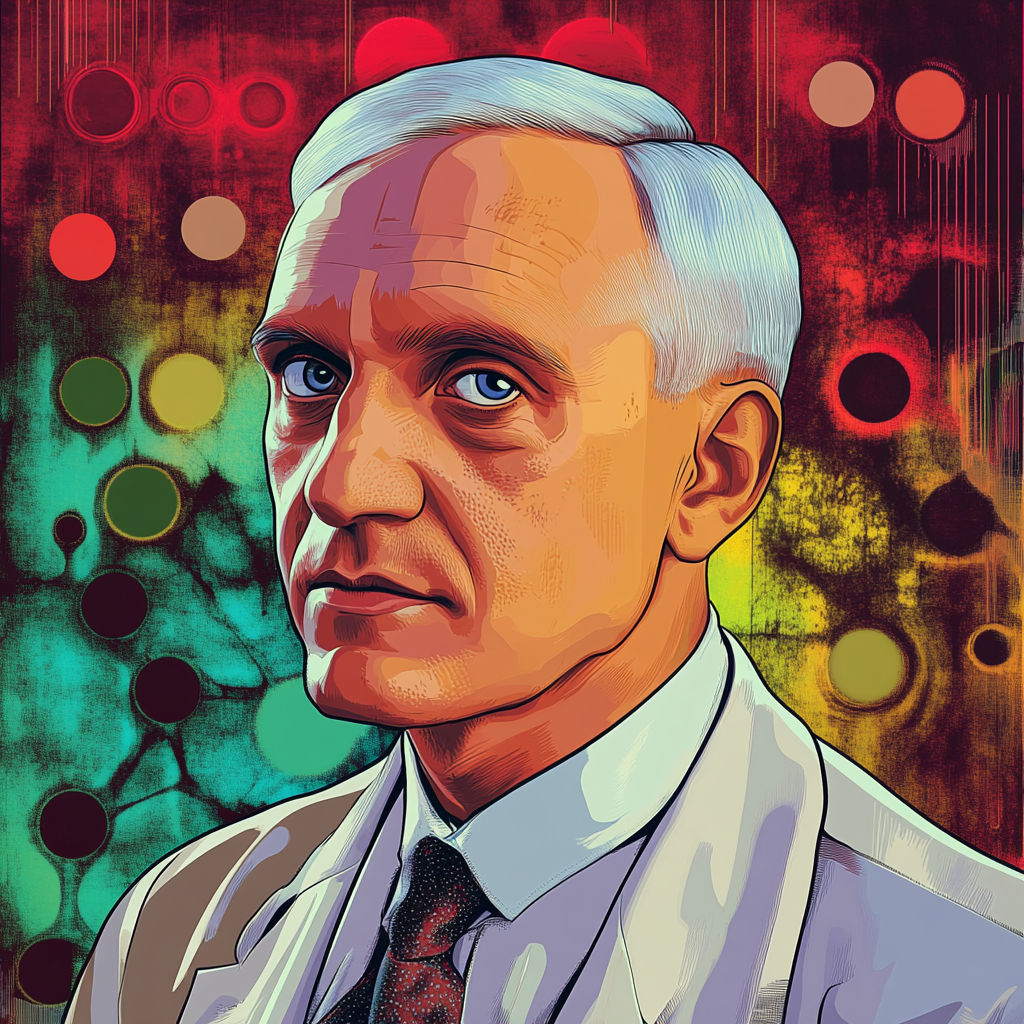
The Messy Lab That Saved Millions of Lives: How Alexander Fleming Discovered Penicillin
Share
You’re a scientist, and after weeks of hard work, you decide to take a much-needed break. You return from your vacation to discover that one of the culture plates you left on your workbench is contaminated with mold. Imagine that that discovery would unlock one of the greatest medical breakthroughs ever. This is the story of Sir Alexander Fleming.
A Mysterious Mold: The Birth of Penicillin
It’s 1928 and Alexander Fleming, a Scottish bacteriologist, was working at St. Mary’s Hospital Medical School in London. On his return from a family vacation, Fleming found that one of his staphylococcus culture plates had become contaminated with mold. For most scientists, this might have been a sign that the experiment was ruined. Instead of tossing the plate, Fleming took the time to observe it, and what he saw was astonishing. The bacterial growth surrounding the mold was gone. Something in the mold killed the bacteria, and Fleming was determined to figure it out.
Penicillium Notatum: A Life-Saving Mold
Fleming identified the mold as Penicillium notatum (now known as Penicillium chrysogenum), and through careful experiments, he realized that it killed bacteria by producing a substance he later named penicillin. This discovery would go on to save millions of lives. Before penicillin, bacterial infections were often deadly. Simple cuts or illnesses, like pneumonia or strep throat, would be fatal. With penicillin, however, doctors could treat these infections, turning once-deadly diseases into minor issues.
Flemming published his discovery of penicillin in the British Journal of Experimental Pathology in 1929, but many of his peers were skeptical. Fleming didn’t give up, though. He continued his research, trying to produce purified penicillin in large quantities. It wasn’t until later, more than a decade, that two other scientists would pick up where Fleming left off, taking penicillin from a lab curiosity to a world-changing medicine.
Ernst Chain and Howard Florey: The Dream Team
Enter Ernst Chain and Howard Florey, two scientists at Oxford University who recognized the immense potential of Fleming’s discovery. In the 1940s, as World War II raged on, Chain and Florey began working to mass-produce penicillin. Soldiers wounded in battle were dying from infections, and the world desperately needed a way to treat them.
With Florey’s leadership and Chain’s expertise in chemistry, the team set out to develop a method for producing penicillin on a large scale. Their work paid off. By the end of the war, penicillin was being produced in massive quantities. It was hailed as a “miracle drug,” capable of treating everything from wound infections to diseases like syphilis and gangrene. The best part is that penicillin wasn’t just for wartime use; it became available to the general public, transforming everyday medical treatment.
In 1945, Alexander Fleming, along with Chain and Florey, received the Nobel Prize in Physiology or Medicine for their work on penicillin. Fleming’s original observation, combined with the work of Chain and Florey, had given humanity its first antibiotic.
A New Era of Medicine: Fleming’s Lasting Influence on Science
Fleming’s discovery of penicillin marked the beginning of a new era in medicine—one where an antibiotic could be used to treat bacterial infections that had once been deadly. After World War II, penicillin became widely available for civilian use. Wound infection rates dropped dramatically, and everyday illnesses, like ear infections, pneumonia, and throat infections, were easily treated with a course of penicillin.
Fleming continued his work at London University and St. Mary’s Hospital where he became Emeritus Professor of Bacteriology. His work earned him numerous accolades, including the title of Fellow of the Royal Society, one of the most prestigious honors in science. He also received the Gold Medal for his contributions to medicine and remained an influential figure until he died in 1955.
Fleming remained humble about his discovery. He once remarked that his discovery was more serendipity than skill, noting that he “didn’t plan to revolutionize all medicine by discovering the world’s first antibiotic.” He even warned that bacteria could eventually become resistant to antibiotics if they were improperly used, highlighting an issue of present concern.
If Fleming had thrown out that contaminated staphylococcus culture plate, penicillin might never have been discovered. Today, his legacy lives on in every dose of antibiotics given to a patient. His work reminds us that science is often a journey filled with unexpected outcomes, and sometimes, the greatest breakthroughs happen when we least expect them.
Check out these resources to learn more about Alexander Flemming:
Vellar, I. D. (2002). Howard Florey, Alexander Fleming and the fairy tale of penicillin. Medical Journal of Australia, 177(1), 52-53. https://doi.org/10.5694/j.1326-5377.2002.tb04643.x
Brown, Kevin. "Alexander Fleming". Encyclopedia Britannica, 2 Oct. 2024, https://www.britannica.com/biography/Alexander-Fleming. Accessed 26 October 2024.
Tan SY, Tatsumura Y. Alexander Fleming (1881-1955): Discoverer of penicillin. Singapore Med J. 2015 Jul;56(7):366-7. doi: 10.11622/smedj.2015105. PMID: 26243971; PMCID: PMC4520913.
